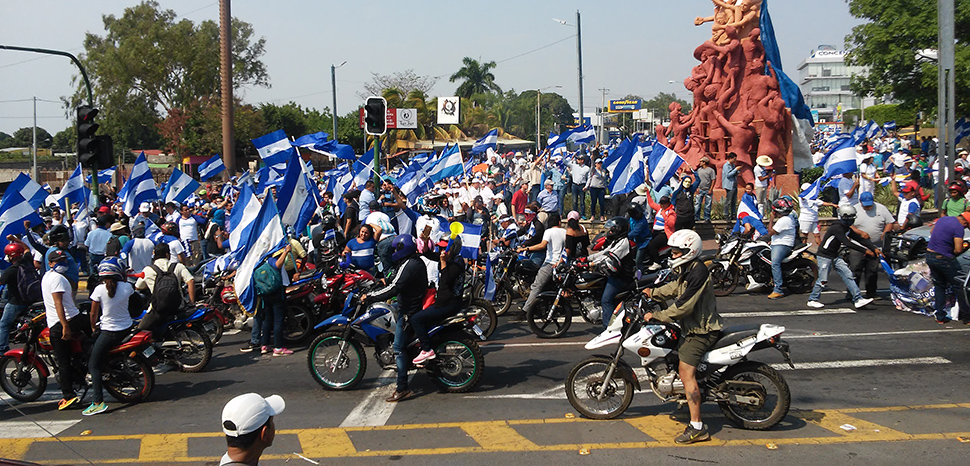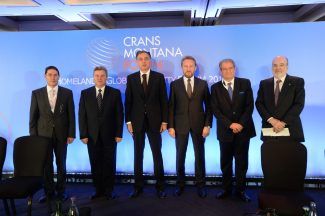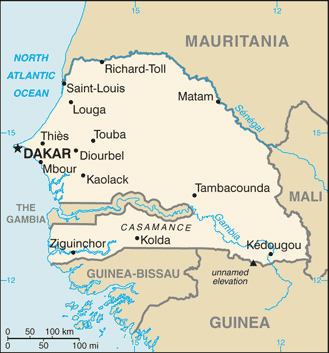This backgrounder is the second in a two-part series. The first entry covers political developments leading up to 2018, and can be found here.
After returning to power in 2007, Nicaraguan president Daniel Ortega all but abandoned the socialist ideology that the Sandinistas had espoused during the 1970 and 1980s. In fact, he established a strong relationship with the nation’s economic elites in order to enhance Nicaragua’s business climate. (They, in turn, refused to fund the campaigns of opposition groups, preferring the apparent stability offered by Ortega to more political tumult). Ortega also worked to ensure Nicaragua complied with IMF demands for economic reforms in order to qualify for international loans, and he abided by Nicaragua’s obligations as a member of the Central American Free Trade Agreement.
The Nicaraguan economy performed well under Ortega, at least until 2018. From 2007 through the end of 2017, it grew by an average annual rate of 4.2 percent, according to the World Bank. GDP per capita rose from $1,328 to $2,168 (in 2018 dollars), a 63 percent increase. The poverty rate fell from just under 50 percent in 2005 to 25 percent by 2016. To many Nicaraguans, Ortega seemed to be a capable steward of the nation’s economy.
In reality, Nicaragua’s favorable economic circumstances were mostly due to factors that were beyond Ortega’s control. One reason was the success of structural economic reforms that were initiated by the Chamorro administration in the early 1990s. Another was the provision of substantial debt relief by international creditors in the mid-2000s under the HIPC initiative. It was also true that annual economic growth over the decade prior to Ortega’s return to the presidency had averaged 3.9 percent, only slightly lower than what it was during his first ten years in office.
The most important factor in Nicaragua’s economic resurgence was the growth of the nation’s labor force relative to the size of the overall population, according to a 2017 report by the World Bank. The report also noted that the drop in poverty levels, which began before Ortega took office, was largely due to an increase in labor income in the agricultural sector, where most of the poorest people work, due to high commodity prices. While Ortega and his wife have often touted the regime’s anti-poverty programs, the World Bank assessed that these initiatives “are generally small and insufficiently targeted, limiting their impact on poverty.”
The 2018 uprising
The 2016 presidential election was widely viewed by opposition forces and the international community as a farce. In June of that year, the Supreme Court removed Montealegre as head of the PLI and replaced him with Pedro Reyes, a man known to have strong political ties to Ortega. Montealegre had been attempting to assemble a political coalition made up of the PLI and other anti-Ortega parties. When 16 PLI lawmakers refused to recognize Reyes as their party’s new leader, the court expelled them from office. It also ruled that the candidacies of Luis Callejas and Violeta Granera, the PLI’s presidential and vice-presidential nominees, were invalid.
In the summer of 2016, Ortega declared that international observers would not be allowed to monitor the fall elections. He also announced that his wife would be his running mate. In mid-August, the opposition coalition announced that it was boycotting the November elections.
As a result, the Ortega-Murillo ticket ran virtually unopposed. The official election results indicated that they had won with 72 percent of the vote. The PLC nominee, Maximino Rodriguez, came in second with 15 percent. The government stated that turnout was 66 percent, but opposition sources said it was less than half that.
Daniel Ortega faced a new challenge to his authority in April 2018 after his government announced new reforms to the state’s social security system. These reforms were recommended by the IMF in order to maintain the system’s solvency. The changes, which involved a five percent cut in benefits and increases to employer contributions, triggered a popular uprising that few anticipated. On April 18, large protests broke out in Managua, León, and Matagalpa. The government quickly reversed itself, but the protests continued.
The initial uproar stemmed not just from opposition to the social security changes, but from accumulated public anger over Ortega’s efforts over the preceding 11 years to sabotage Nicaragua’s democracy. The protesters came from across the political spectrum, united by their opposition to Ortega’s authoritarian rule. Many of the demonstrations were youth-driven, a bad sign for the regime in a nation where half of the population was below the age of 26. Many prominent individuals in the protest movement were former Sandinistas who Ortega had either alienated or expelled from the party.
The protests turned into a conflagration when the regime responded with an iron fist. While Nicaragua’s military leadership indicated that the armed forces would not participate in efforts to put down the protests, the police exhibited no such reservations, ruthlessly and violently assaulting the protesters, most of whom were peaceful. In addition, the regime employed large numbers of armed, organized mobs loyal to the FSLN – dubbed “turbas” by regime’s opponents – for the same purposes. Ortega denied that they were under his control.
In cities across Nicaragua, protesters built hundreds of street barricades made of dirt, stones, and concrete in order to inhibit the movement of turbas and police forces, a tactic that the Sandinistas themselves had employed during their overthrow of the Somoza regime thirty years earlier.
Six weeks into the uprising, the death toll had climbed to 100 and the Inter-American Commission on Human Rights, the human rights arm of the OAS, had called for the dismantlement and investigation of these “parapolice” forces. Similarly, Amnesty International produced a report at the end of May that took aim at Ortega’s use of “pro-government armed groups to carry out attacks, incite violence, increase their capacity for repression and operate outside the law.”
As the protests spread, the anti-Ortega movement struggled to coalesce. The lack of coherent leadership made it more difficult for the regime to suppress the uprising, but it also hindered opposition efforts to unite behind a common set of leaders and demands. In May, the disparate anti-Ortega groups agreed to unify under the banner of the Civic Alliance for Justice and Democracy. The alliance’s main demands were Ortega’s resignation, early elections, and justice for the victims of the crackdown and their families.
By the end of May, it appeared to many that Ortega’s hold on power was nearing its end. A CID/Gallup poll indicated that 70 percent of Nicaraguans wanted him to resign. His approval rating, which had been 62 percent at the start of the year, had fallen to 19 percent. COSEP, the nation’s largest business association, supported the protesters’ call for early elections.
The Nicaraguan Catholic church sought to facilitate negotiations between the Civic Alliance and the government. Talks began on May 16, but they were suspended after a week because the two sides were too far apart. They resumed on June 12, but it was apparent to many that the Ortega regime wasn’t acting in good faith and that its participation in the negotiations was little more than a stalling tactic. As the negotiations went on, the government launched “Operation Clean-up” to dismantle the barricades erected by the protesters and reassert control over the country. The talks broke down again after regime supporters attacked several Catholic church leaders (who the FSLN believed sympathized with the protesters) on July 9.
As the summer wore on, the regime’s use of brutality seemed to be having the desired effect, and the protests began to fade. By the second half of July, the regime had succeeded in removing most of the barricades. On July 16, the National Assembly enacted legislation that greatly expanded the definition of terrorism in order to give the regime greater ability to arrest and prosecute protest leaders.
The government’s actions were met with widespread international criticism. On July 18, the OAS condemned the crackdown and called on Ortega to negotiate a “new electoral calendar.” Six days later, US Vice President Mike Pence stated that Ortega should step down. On August 29, the OHCHR issued a report that called on Ortega to end the crackdown and disarm the turbas. According to its authors, “There are currently no conditions for the free and safe exercise of the rights to freedoms of expression, peaceful assembly, and association.” Ortega responded to the report by expelling the UN investigators.
With the apparent abatement of the protests, the regime accelerated its attacks on civil society organizations and independent media outlets who were critical of its actions. It also sought to put pressure on the Nicaraguan business community, which in years past it had been able to coopt, to force it to back away from its support for the anti-Ortega movement.
By the end of 2018, the turmoil had taken a major toll on Nicaraguan society. The total death toll stood at 322. Hundreds of protesters were imprisoned, and approximately 60,000 Nicaraguans had fled the country. The economy, which had grown by 4.6 percent in 2017, contracted by four percent in 2018.
In February 2019, the Civic Alliance articulated four demands: release of 770 political prisoners, restoration of media freedoms, electoral reform and the holding of early elections, and justice for the families of the protesters who were killed in the crackdown. But the opposition struggled to find leadership and achieve cohesion. This proved to be a serious impediment; Ortega’s efforts since 2007 to eliminate potential political opponents had been effective.
New protests flared up in March, and the regime again responded with force. Four months later, the National Assembly enacted legislation that provided amnesty to protesters who had been arrested and gave immunity to turba and parapolice members who had engaged in violence. The latter provision was widely condemned by human rights groups and rejected by the opposition.
The regime intensified its crackdown on independent news media in the fall of 2019. In September, El Nuevo Diario, the nation’s second largest newspaper, shut down its operations in response to government pressure. The following month, the regime seized control of 100% Noticias TV, claiming it had encouraged violence during the uprising. Most of the remaining major media outlets in Nicaragua are owned by members of the Ortega family and its allies.
The protests eventually died down again, but the nation’s economy was in shambles. Tourism dried up and private investment declined sharply in response to the political instability. The economy continued to contract in 2019 by 5.7 percent. By March of the following year, more than 100,000 Nicaraguans – including many of its best and brightest – had fled the country.
COVID-19 and the prelude to the 2021 elections
The first known case of COVID-19 in Nicaragua surfaced in mid-March of 2020. Fearing that taking steps to contain the disease’s spread would harm the economy and further undermine its hold on power, the Ortega government immediately began hiding evidence of additional cases, and public statements by regime officials downplayed the severity of the pandemic.
The government announced early on that there would be no quarantines or restrictions on public life. Nicaraguan were told to continue living their normal lives by attending sporting events, religious gatherings, and other public meetings. Mask wearing was strongly discouraged, and medical personnel were forbidden from wearing them, ostensibly to avoid scaring their patients. The authorities also actively encouraged people to continue to interact with loved ones with hugs and kisses.
As the coronavirus outbreak unfolded, political tensions in Nicaragua continued to fester. In late February of 2020, seven anti-Ortega opposition groups that had formed following the 2018 uprising announced that they were banding together to form a broad alliance known as the National Coalition. Among them were the Civic Alliance and Blue and White National Unity, another opposition group formed in response to the 2018 turmoil. The National Coalition was not intended to be a political party, although it included several, but rather a movement geared toward restoring democratic governance, eradicating corruption, and ensuring that human rights were protected.
The international community also increased external pressure on the Ortega-Murillo government. Both the United States and the European Union imposed targeted sanctions on high-ranking officials for their roles in the crackdown. In June 2020, the U.N. Human Rights Council approved a resolution condemning Nicaragua’s human rights violations. Four months later, the OAS approved a measure calling on Nicaraguan authorities “to fully respect the constitutional order, human rights and fundamental freedoms, and to hold free and fair national, presidential and legislative elections in Nicaragua.”
The Ortega-Murillo regime instead opted to move in exactly the opposite direction. The National Assembly enacted a series of new laws that effectively criminalized political dissent. The first of these was touted as a “law for the regulation of foreign agents.” It requires Nicaraguans working for international companies or organizations to register with the Interior Ministry as foreign agents and provide the government with monthly reports of their income and spending. Such individuals are prohibited from providing financing (or fundraising) for any political group or organization within Nicaragua, and the law also bars them from running for office.
Another law enacted that fall, the Special Cyber Crimes Law, mandated prison time for anyone who engages in “the publication or dissemination of false (or) distorted information, likely to spread anxiety, anguish or fear.” Such broad language gives the government the authority to arrest anyone who uses the internet or social media in a way that the regime deems objectionable. In December, the National Assembly approved legislation that gives Ortega the authority to declare any individual he chooses as a terrorist or “traitor to the homeland” and bar them from seeking public office.
With the enactment of these draconian laws, one might think that the regime would feel secure in its hold on power. Yet despite these steps, Ortega appears determined to leave nothing to chance when it comes to the 2021 election. He has sought to eliminate any risk of an opposition candidate stepping forward to mount a popular challenge to him in November. Because the FSLN controls the nation’s electoral machinery, there is virtually no chance that Ortega could actually lose, but a strong opposition candidate could conceivably amass enough popular support to challenge the official result, possibly setting off a new wave of protests and unrest.
To ensure that such an outcome is avoided, Ortega’s regime began arresting potential opposition candidates on trumped up charges since spring. Christiana Chamorro, daughter of former president Violeta Chamorro and a likely 2021 presidential candidate herself, was placed under house arrest by the authorities on June 3 and charged with money laundering. Another potential candidate, Arturo Cruz, was detained two days later on charges that he was “conspiring against Nicaraguan society.” Ten more opposition figures were arrested over the following two weeks, mostly based on allegations of terrorism, treason, or crimes against the state. Most have been held incommunicado at undisclosed locations without the benefit of counsel.
The outlook for those seeking Ortega’s ouster is not promising. Unity has so far proved elusive for the regime’s opponents, and in any case the National Coalition has announced that it will boycott the November 7 election. Virtually anyone in the country who could conceivably pose a political threat to Ortega has either been arrested or fled the country. Moreover, foreign efforts to pressure Ortega to change course have had little effect, at least so far.
Following the 1990 election of Violeta Chamorro, there was a great deal of optimism among both Nicaraguans and international observers that the nation’s emerging democracy would prove enduring. That optimism turned out to be misplaced. Three decades later, Nicaragua is a nation governed by an authoritarian state, and that state of affairs seems unlikely to change anytime in the foreseeable future.




